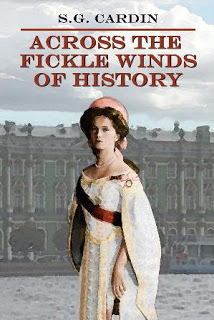Writing Tuesday - Tips on Creating Characters

You've got a great idea for a story and a plot that won't leave you alone. You dream about it at night. It haunts you during the day. Now all you need are some characters for your plot.
Before you can write, you need to flesh out your characters a little bit and get to know them.
Inspiration for your characters generally have four sources:
Yourself
Real people you know
Real people you hear about
Pure imagination
There are strengths and weaknesses to each category so consider it all before you start to flesh out your characters
Yourself
You, the author, were there emotionally, so you can draw on your own experiences and feelings. The drawback is you might be too close and lose your objectivity. The inside knowledge you bring is great, but be mindful to keep your objectivity.
Real People You Know
Say your best friend loves to tell jokes and that's a trait you want to bring to your character. You can blend traits with others (such as a fear of being alone) for depth to craft the character you want for your plot. The drawback is this might limit your imagination so that's something to be mindful for.
Real People you Hear about
Oh, those Kardashians! We know them from what we read about them, but we don't really know them. Look at Kim. I don't think we'll really know if the marriage was real for her or not. When you base a character on a real person you've heard about, it can work well because you're not held to any facts. You can get very creative with your character choices.
Pure imagination
You are only limited by your imagination. From the spark of an idea, you can build the character you need for your story. It takes creativity and time though to really flesh out this type of character, which might take time away from other aspects of your writing.
Characters in a story are either "changers" or "stayers." The main character is usually a changer – a character who grows or learns something due to the events of the story. A "stayer" is a character who can't/or doesn't change. (emotionally, they don't grow.)
Change for the main character is what a story/plot is all about. Readers love a good emotional arc and to be convincing, the author must make the reader believe the character can change.
As part of my "preliminary work," I like to put together character mini bios. This helps me to flesh out the basics: their names, backgrounds, strengths, weaknesses, likes, dislikes. I also like to "cast" them so as to get a feel for them visually. If I have time, I like to write a short story or a vignette to see how they'll react to certain events. This way when I'm ready to write my story, my characters are ready for the ride.
Feedback: Do you have any tips you can share?
Reference: "Characters, Emotions, and Viewpoint," by Nancy Kress, Writer's Digest Books, 2005, 231 pages.
Published on December 06, 2011 06:00
No comments have been added yet.



